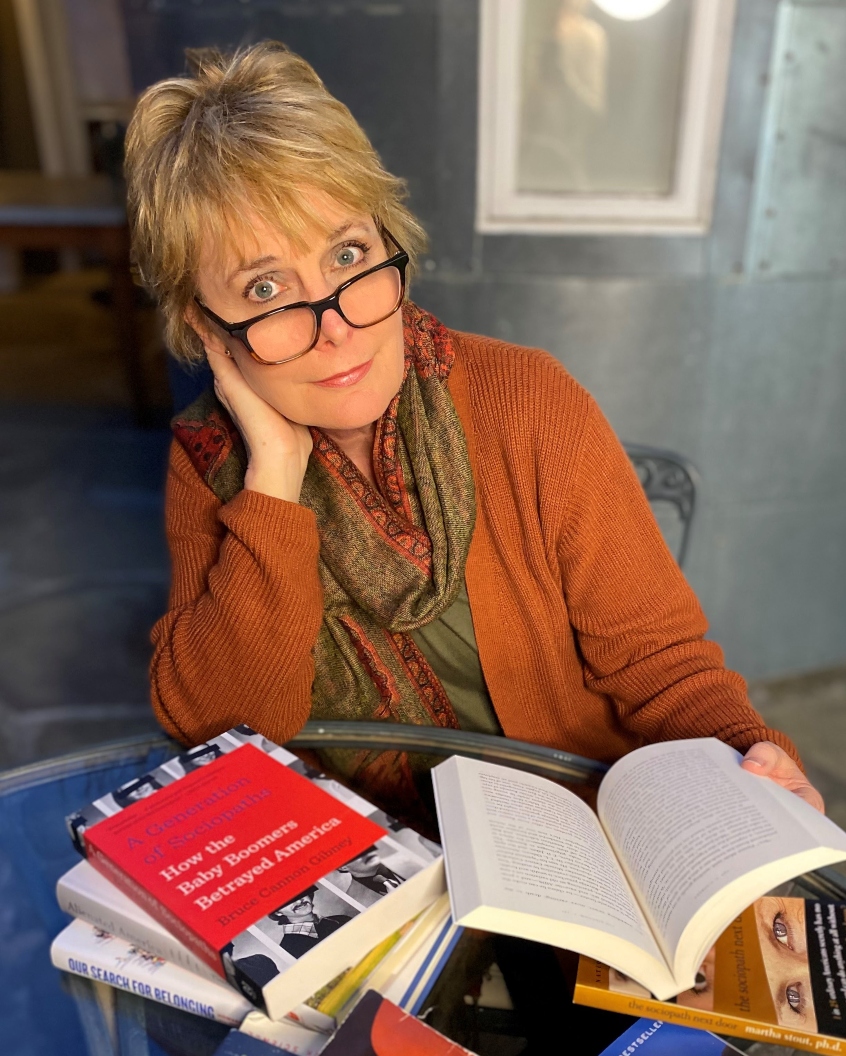Radhia Gleis draws from personal and contemporary examples of narcissistic cult leaders for her book.
By Claire Misfeldt, Photos courtesy of Radhia Gleis
On June 16, 2015, Radhia Gleis saw the announcement that Donald Trump was running for president. Like many people watching the broadcast, she was concerned and immediately labeled him as a narcissist. Yet unlike many people, Gleis spoke from personal experience dealing with narcissistic leaders. She used to know one from her former life in a cult.
Gleis’ Time with Buddhafield
For 25 years, she was part of the Buddhafield cult, which was run by Jamie Gomez. Gleis’ time with Buddhafield coupled with Trump’s announcement helped inspire her book The Followers: Holy Hell and the Disciples of Narcissistic Leaders: How My Years in a Notorious Cult Parallel Today’s Cultural Mania.
Buddhafield was established in Hollywood during the early ’80s before migrating to South Austin in 1992. When Gleis first joined, the group championed spiritual healing and fulfillment. Gomez—who went by Michel, Andreas or The Teacher—offered a sex- and drug-free lifestyle that would bring members closer to God. Because of this, Buddhafield attracted many rape survivors, former drug users and anyone who felt lost or alone.
“None of us were brainwashed. We were already looking for this,” says Gleis. “All Jaime did was recognize what we were looking for and make that a reality for us.”
Gomez also sexually abused and manipulated the young men in the cult, forcing them to keep quiet about it. In 2006, Gleis and many other Buddhafield members left the cult after a letter circulated within the group. It detailed the sexual abuse, encouraging other male members to speak out against Gomez. Most of the women in the group had no idea this was occurring, including Gleis.
Holy Hell and the Motivation to Write

In 2016, a documentary about Buddhafield called Holy Hell was released at the Sundance Film Festival. Former member Will Allen had 22 years’ worth of archived footage. The filmmakers interviewed Gleis for the film, and she took part in post-screening Q&A sessions. Many viewers judged the former members for being part of the cult in the first place.
“First of all, no one wakes up one day and says, ‘You know, I’m gonna join a cult!’ That doesn’t happen,” Gleis argued.
The judgment from strangers attributed to Gleis’ motivation for writing The Followers. She wanted to share her personal experience as a highly educated woman who found herself with a narcissistic sociopathic cult leader. Trump’s growing popularity and support group around this time also helped guide her research and writing.
Focus on the Cult Members, Not the Leader
The Followers focuses on the cult members and how they feed the narcissist’s ego. In media coverage surrounding cults, there’s a lot more emphasis on the leaders than on the members. There’s information on why people join cults and resources for those who do leave cults, yet Gleis found that there was almost nothing about how active members behave in relation to the narcissistic leader.
“It is much more important to put the focus on the followers because they are the ones who will do the damage in this country,” Gleis insists.
Gleis splits the book into three sections: “Journey,” “Buddhafield” and “Reflections.” Not only does she use her experience from Buddhafield, but she also draws from past spiritual or political cult leaders who become “authoritarian.” She looks into the characteristics of a narcissist as well as the relationship they hold with their followers.
Gleis also uses humor to help educate and argue her point. She points to growing up with a learning disability during a time when no one knew what that term meant. Gleis recalls having a lot of bad teachers. So she figured out the best way for her to learn and applied that to her writing. She also wanted the book to be enjoyable, labeling The Followers as creative nonfiction.
“I’m bringing a lot of factors into this book,” she says. “But I wanted it to be entertaining, and I wanted it to be humorous.”
The Followers is available in print at participating bookstores. Local bookstores include BookPeople and BookWoman. To listen to it in Gleis’ own voice, purchase it through Audible.


